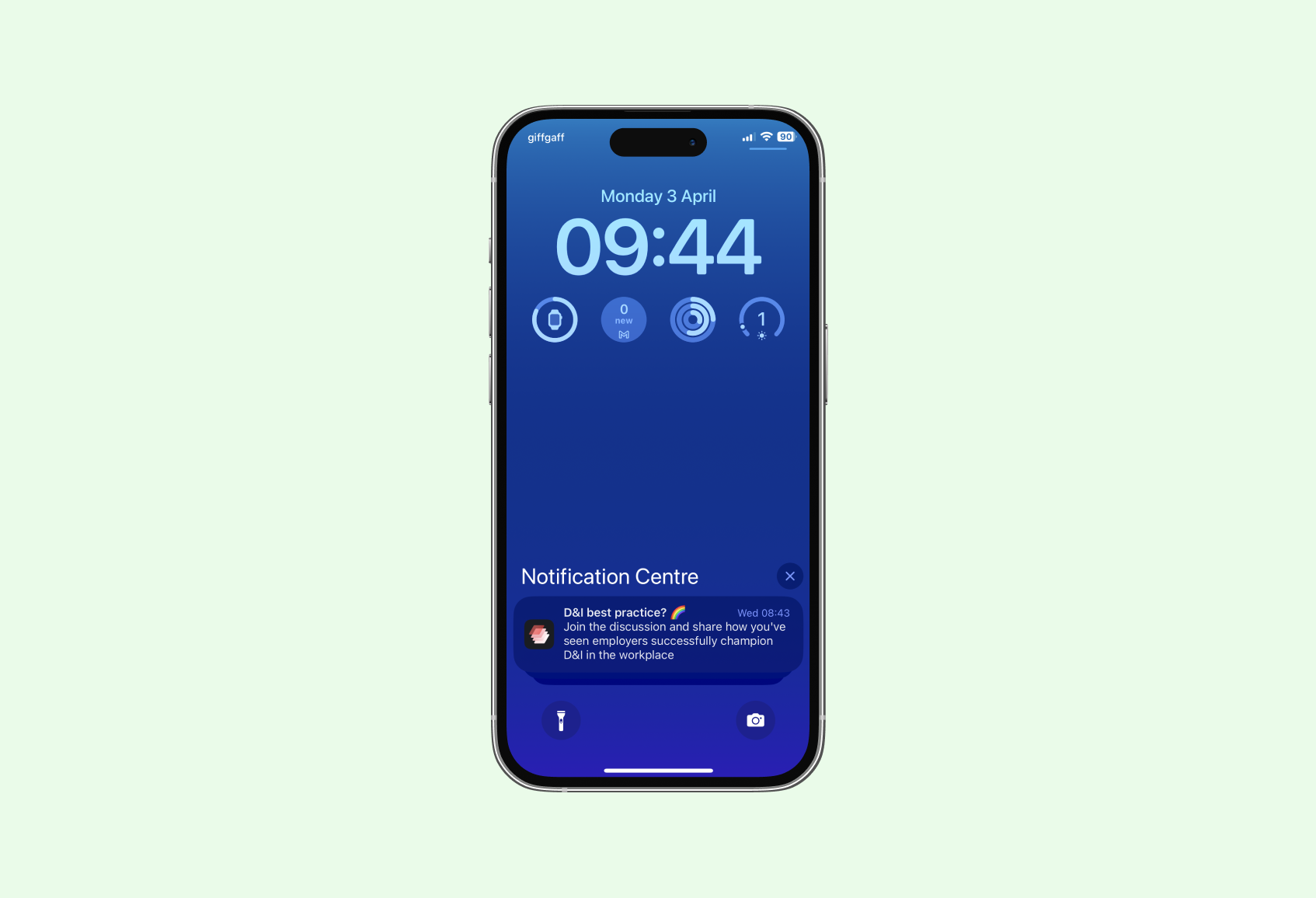FRAMEWORK: NOTIFICATIONS
February 2023
Framework notification
Increase app engagement through push notifications (as measured by DAU/MAU) towards 30%.
01 / Summary
Team
Design Lead
PM
Community manager
CTO
2 x engineers
What I did
Design discovery
Ideation
Wireframing
Prototyping
iOS and Android UI design
QA
Deliverables
A notifications strategy
User flows
Notifications copy
Clickable prototype
UI designs
02 / Framework overview
Framework is an early stage startup offering an educational app aimed at business skills for employees at startup companies. The app launched in app stores in January 2023 - leading up to this point the product team ran a series of 4 sprints to ready the product for a public release.
One of the requirements around go-live was to add push notifications to the app with the purpose of driving engagement.
03 / Notifications design
I first created a holistic view of how push notifications fit with other channels (push, in-app, DMs, email). I mapped 25 communication types, classifying notifications as broadcast (e.g., new content) or social (e.g., comment reply). For each, I detailed triggers, messaging, CTA, considerations, and priority in Notion, then shared it with the team. The technical team used this to write a specification.
I established principles to guide notification decisions, knowing they can irritate if handled carelessly.
The principles were:
Don’t overload members - use push notifications & emails sparingly.
Give members control of notifications: both opt-in & pause (without overwhelming them with choice).
Use smart batching of notifications to increase signal.
Be mindful of the frequency that some notifications may occur and be prepared to limit, throttle or batch these if need be.
Consider the best days and times to send notifications to our audience and be aware of different time zones.
04/ Solution design
After finalising the notification strategy and technical scope, I began solution design, focusing on message design and user activation of notifications with permission consent. The Framework app’s unique onboarding places new users in an 'Entrance Hall Mode' by cohorts while awaiting a welcome event. This mode helps users explore the app, complete onboarding tasks like filling profiles and setting learning priorities, with a notification enablement prompt added to the todo list.
Entrance hall mode
In-app notifications feed
05/ Impact assessment
Post-launch, our notification opt-in rate was 27%, below our 30-40% expectation.
During feedback with initial cohorts, some users missed the prompt entirely. Others said they received too many notifications.
06/ Assumptions
Working in tandem with the PM, after looking at the data and the research we made some assumptions around why our opt in rate was so low. We concluded:
Learners see Framework as a work app that they need to install on their personal phone
Learners don't see the value of receiving Framework’s notifications
Learners are missing the prompts to enable push notifications
07/ Ideation
Taking our assumptions we ran an Opportunity Solution Tree exercise with the whole team to generate and vote on ideas around how we might increase the activation rate.
Opportunity solution tree
08/ Solution design
With the output of the OST session I then moved into solution design and generated a series of possibilities.
More compelling copy - expose the value of turning on notifications.
Micro-commitments - people feel less threatened by small steps that are coherent with previous actions e.g. when a user is browsing the Curriculum section prompt them to turn on notifications to see when new content is added.
Singularity effect - people care more about single, identifiable individuals over abstract groups or concepts, e.g. when a user sends a DM to another user, prompt them to turn on notifications to see when they get a response
More control - give users more control to show or hide the notifications that are most relevant to them.
Notification prompts
Notifications control
I led a design crit where the team agreed on small bets using stronger copy and active prompts. They liked giving users more control, despite some technical challenges.
With the PM, we drafted Notifications epics and stories for the next planning session. We prioritised low-effort, high-value tasks like adding active prompts with new copy to onboarding and a bottom-sheet prompt on the Curriculum tab. Remaining stories moved to a follow-up sprint for the control screen and batching notifications for replies and likes.
The new features were delivered over a single 2-week sprint.
09/ Outcome
One week after releasing notification updates, opt-in rose 8%. After onboarding 3 more cohorts, opt-in is 43%, with no member feedback on notifications.
At Framework, we continuously discover by weekly member interviews. Since launching notifications, we’ve sought user feedback on control and will conduct a full impact assessment soon.






